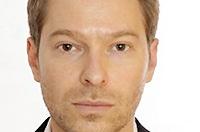Porsche says the eighth generation of its iconic 911 will once again raise the bar for luxury sports cars when the Carrera S version arrives at dealers this month. The 911 has high-tech new assistance systems such as thermal imaging cameras for better vision during night driving and “wet mode” to improve handling on slick surfaces. This is needed because the 911 is much more at risk of aquaplaning due to its light weight and broad tires. Additional upgrades include standard LED headlights and a new subframe that isolates engine vibrations before they penetrate into the cabin. Engineers have also adapted the sports car for a digital world, replacing four of the five dashboard dials with virtual ones using two high-resolution 7-inch displays that flank the centerpiece analog rev counter on both sides.
March 25, 2019 11:35 AM
Featured Stories
New Stellantis CEO Antonio Filosa faces series of hurdles
Filosa’s ability to honestly assess where Stellantis has erred in recent years could prove vital as he works to repair relationships with dealers, suppliers and employees.
Latest News
Staying current is easy with newsletters delivered straight to your inbox.
Staying current is easy with newsletters delivered straight to your inbox.









